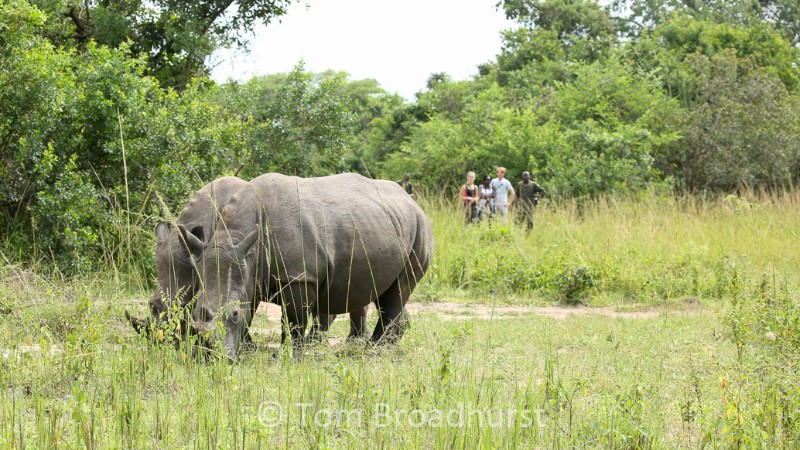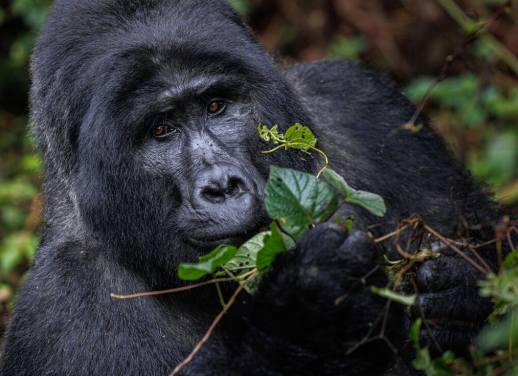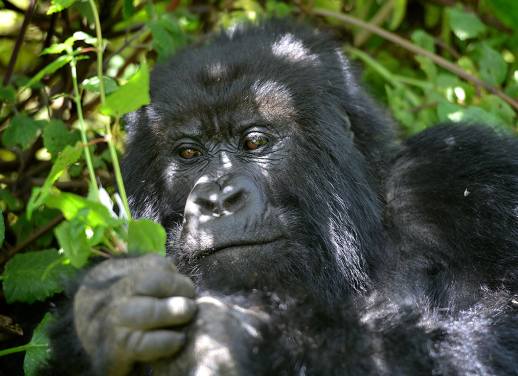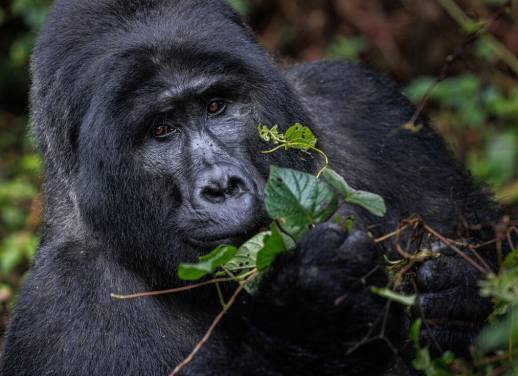“Follow my instructions at all times,” stated Robert Tumusiime, my guide at Ziwa Rhino Sanctuary in Uganda, as we left our vehicle and headed into the African bush on foot.
Due to recent rains, a proliferation of tall grasses populated the flat terrain, and colourful birds – flycatchers, rollers, bee-eaters, orioles – chattered and danced from tree to tree around us. Apart from that it was wonderfully silent.
“It won’t be easy to see rhinos amongst all the vegetation,” I said.
“Don’t worry, they are there,” replied a smiling Robert.
“That’s precisely what I’m worried about!” I thought to myself.
With 24-hour monitoring by a team of trained and committed rangers, Robert and the team knew exactly where the rhinos were feeding that day, and they manoeuvred us to closer to our quarry.
Suddenly there they were. And running in our direction.
“Keep calm,” said Robert, as we hid in a dense thicket, “they are just playing with each other.”
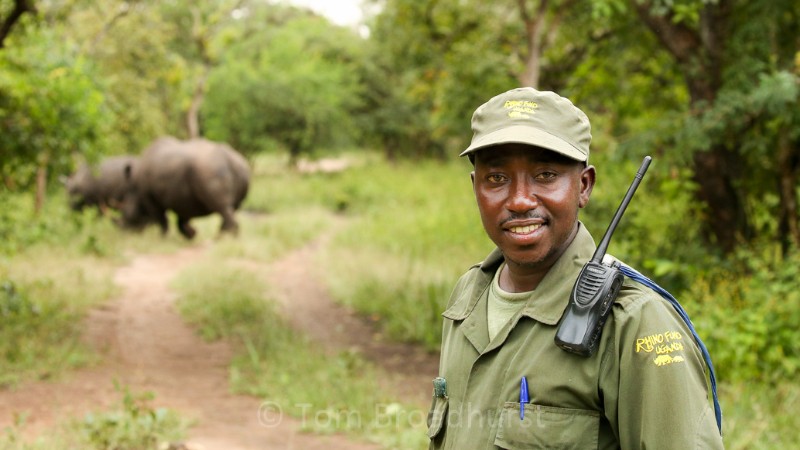 Amazingly, we had encountered a large gathering of six or seven rhinos – adult females and their young – with two one-tonne youngsters jousting in a mock fight barely 20 metres from our bushy refuge. Full of adrenaline, I had to take a deep breath to compose myself and be mindful of this close encounter.
Amazingly, we had encountered a large gathering of six or seven rhinos – adult females and their young – with two one-tonne youngsters jousting in a mock fight barely 20 metres from our bushy refuge. Full of adrenaline, I had to take a deep breath to compose myself and be mindful of this close encounter.
COME FACE-TO-FACE WITH A RHINO ON OUR 21-DAY GORILLAS & CHIMPS IN DEPTH ADVENTURE
I doubt I have enough adjectives to describe the experience of walking in the African bush alongside wild rhinos. Wow, was all I could think. On a regular safari, tourists are, to a certain extent, insulated from the wildness by their vehicles and the sound and smells of engines. This was very different. Being so close to such enormous, armour-plated wild animals, protected only by the trust I had in my guide, his understanding of rhino behaviour, and a few small trees and shrubs, was an exhilarating experience to say the least. It’s a full-on sensory experience. Given their bulk (adult white rhinos can weigh three tonnes), rhinos are surprisingly quiet; yet at close quarters you can hear them breathe and grunt, coupled with the rhythmic sound of their grazing, and even the smell of the earth disturbed beneath their feet. Visually, you can appreciate the rugged texture of their skin, their huge toe-nails, their wiry eyelashes… And all to the beat of my over-active heart!
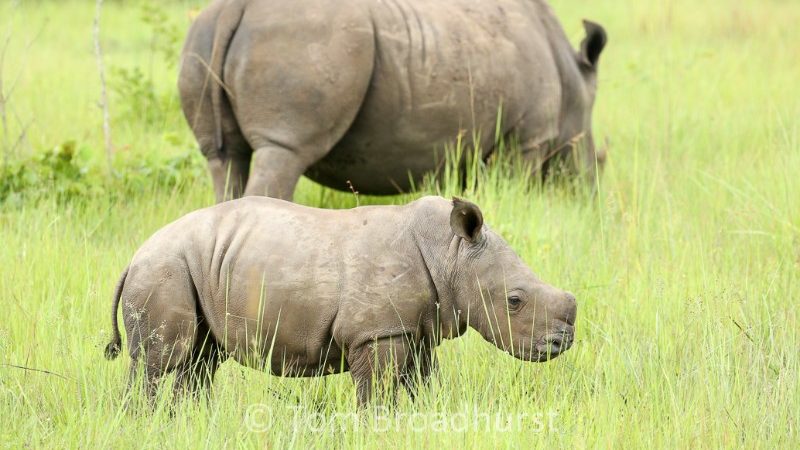 Later I was lucky enough to see both of the sanctuary’s newborn calves, Apache and Madam, with their mothers. Far from being aggressive or over-protective, their mothers were calm and allowed me and my guide to observe them from a respectful distance. They were remarkably gentle, though like all toddlers the youngsters were inquisitive – playing in the mud, nibbling newly discovered plants, and gambolling around like spring lambs – before suckling from their mothers and having a nap in the shade once the equatorial sun got too hot. I felt privileged to witness these moments of tenderness.
Later I was lucky enough to see both of the sanctuary’s newborn calves, Apache and Madam, with their mothers. Far from being aggressive or over-protective, their mothers were calm and allowed me and my guide to observe them from a respectful distance. They were remarkably gentle, though like all toddlers the youngsters were inquisitive – playing in the mud, nibbling newly discovered plants, and gambolling around like spring lambs – before suckling from their mothers and having a nap in the shade once the equatorial sun got too hot. I felt privileged to witness these moments of tenderness.
RELATED: HOW A LOCAL GROUP IS FIGHTING POVERTY IN KENYA, ONE PIG AT A TIME
But how is all this even possible? It’s part of a unique project to reintroduce wild rhinos to Uganda, led by non-profit organisation Rhino Fund Uganda. Historically, both white and black rhinos could be found living in the country, but rampant poaching during Uganda’s post-independence conflicts was devastating for wildlife, and wild rhinos were declared extinct in 1983.
However, in 2005/6, following decades of peace and stability, Rhino Fund Uganda facilitated the release of six adult southern white rhinos – four trans-located from Kenya and two from Disney Animal Kingdom in the USA – onto a 7,000 hectare ranch in Nakasongola district (180 kilometres north of Kampala). Nature took its natural course, and the first successful birth occurred in June 2009 – a male with joint Kenyan and American heritage. Naturally they called him Obama! Since then, Ziwa Rhino Sanctuary has gone from strength to strength, and the current population stands at 21 southern white rhinos, with two babies born in 2017.
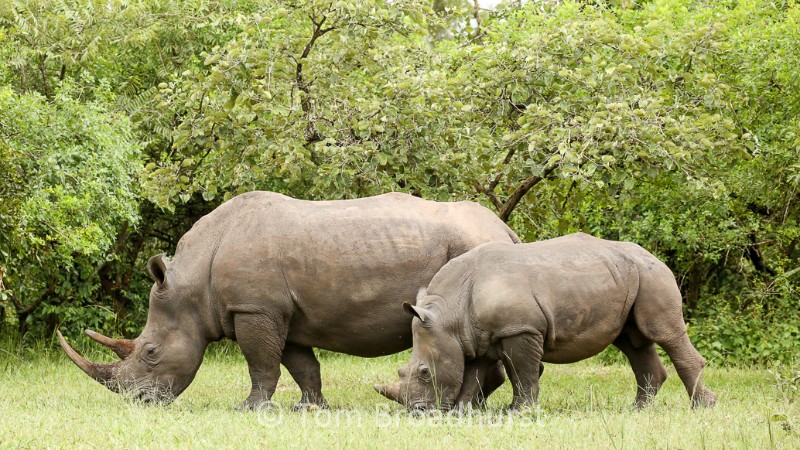 Tourism plays a major role in this innovative conservation initiative, with an active rhino trekking program, an on-site lodge, and opportunities for other wildlife encounters including atmospheric night walks where elusive leopards, aardvarks and pangolins may be seen. The income generated from these activities ensures that the Rhino Fund have the resources needed to manage the sanctuary, undertake community projects and, ultimately, protect the rhinos.
Tourism plays a major role in this innovative conservation initiative, with an active rhino trekking program, an on-site lodge, and opportunities for other wildlife encounters including atmospheric night walks where elusive leopards, aardvarks and pangolins may be seen. The income generated from these activities ensures that the Rhino Fund have the resources needed to manage the sanctuary, undertake community projects and, ultimately, protect the rhinos.
RELATED: EAST AFRICA’S WILDEBEEST MIGRATION – EVERYTHING YOU NEED TO KNOW
Like everywhere as far as rhino conservation is concerned, the main threat to Ziwa is poaching. In Africa in the last decade, an estimated 7245 rhinos have been poached for their horns, which are illegally exported to Asia for use in traditional medicine. As a result, there are now only around 20,000 white and just 5,000 black rhinos left in the wild in the whole of the African continent.
Fortunately, we can collectively do something about this.
“The best way to support rhino conservation in Uganda is by visiting the sanctuary,” explains Rhino Fund Uganda’s passionate Executive Director Angie Genade. “You can also adopt a rhino, name a rhino or make a donation. All contributions go directly to our projects.”
In its own small way, my rhino trekking experience has helped to safeguard these amazing animals, demonstrating how responsible tourism can make a difference. What’s more, seeing the newborn calves Apache and Madam has given me hope that one day their offspring will be able to roam wild in Uganda’s protected areas.
Visit Ziwa Rhino Sanctuary and come face to face with a rhinoceros (among other incredible African wildlife) on our 21-day Gorillas and Chimps In Depth adventure.
All photography by Tom Broadhurst.

